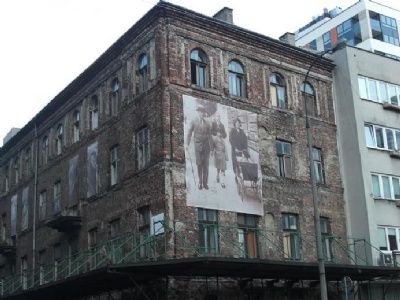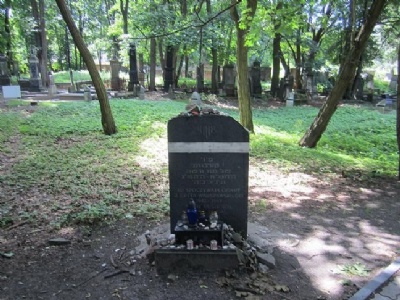Warsaw Ghetto
Warsaw Jewish ghetto was established in November 1940, and was the largest Jewish ghetto in occupied Europe. When the ghetto was at its largest in 1941, the ghetto’s population was about 450,000. This represented about 30 percent of Warsaw’s total population. Warsaw was second to New York when it came to Jewish residents. The Jews lived on an area of about 400 hectares, which corresponded to 2.4 percent of Warsaw’s total area.
The Ghetto was surrounded by a wall and cordoned off from rest of the city and it was only allowed to leave or visit the ghetto with special documents. Residents of the ghetto were assigned 253 calories per day/person, non-Jewish poles were assigned 2353 calories per day/person and germans were assigned 5613 calories per day. As in other ghettos, it was overcrowded, lack of food, medicine and other supplies. The spread of contagious diseases, like typhoid, was therefore extensive and contributed to the deaths of many ghetto residents.
In 1942, the Nazis began deporting Warsaw’s Jews to Treblinka. The deportations took place from umschlagplatz (relocation site) in the northern part of the ghetto. Deportations continued throughout the year and rumors about Treblinka reached the ghetto. In January 1943, when the Nazis started the second major action against the Jews (the first action was between July and September, 1942), a minor insurrection broke out in the ghetto. The insurrection lasted only a few days but it can be seen as a small victory for the insurgents because only 5000 of the planned 8000 deportations could be carried out.
But the residents of the ghetto understood that the Nazis would come back for a final liquidation of the ghetto. For this reason, the Jewish fighting organisations, Zydowska Organizacja Bojowa (ZOB) and Zydowski Zwiazek Wojskowy (ZZW) began to smuggle weapons in to the ghetto. When the Nazis began the final liquidation of the ghetto, April 19, 1943, the Jews were armed and fought back. The Jews had good local knowledge of the ghetto, both above and below ground, thereby delaying the cleansing actions by hiding in the sewers and in bunkers and ambush the germans.
But the Nazis methodically crushed the insurgents by forcing them out of their hidings by blowing up houses, using both flamethrowers and tear gas. On May 8, the Nazis located the Jewish command center at Mila 18, which resulted in most of the insurrection’s command structure being killed or committing suicide. With no command chain in existence, the majority of the remaining insurgents surrendered a week later. The former ghetto was then in ruins.
As a symbolic end to the fighting, Nazi commander SS-Brigadeführer, Jürgen Stroop, blew up Warsaw’s great synagogue on May 16. Sporadic fighting continued until early June 1943. Among the ruins, the Nazis set up a concentration camp where one of the tasks for the prisoners was to clean up the former ghetto. The camp was called KL Warschau and was subordinated to Majdanek in April 1944.
The cleansing action that the Nazis thought they could carry out relatively easily in a few days continued for about three weeks and had a great symbolic value for the defeated Jews. They had shown to the outside world, themselves and the Nazis that they could fight back. Exactly how many Jews died during the uprising is difficult to estimate. According to the Nazis, the cleansing action had resulted in 56,065 Jews being arrested or killed during the action. The Nazis reported 16 dead and 86 injured.
After the fighting, Jürgen Stroop compiled a leather-bound report entitled, Es gibt keinen judischen Wohnbezirk in Warschau mehr (Warsaw ghetto is no more). In both image and text, day by day Stroop presented the actions. After the war, Stroop was arrested by the Western allies but extradited to Poland and brought before a court in Warsaw where he was sentenced to death in 1951. The verdict was executed 1952 in Mokotow prison, Warsaw.
Current status: Partly preserved/demolished with monument (2015).
Location: 52°14'59.09" N 20°59'39.12" E (monument).
Get there: Tram or Bus.
Follow up in books: Gilberg, Martin: Holocaust: A History of the Jews of Europe During the Second World War (1987).













Unfortunality all bunkers used by the insurgents are gone, but parts of the ghetto wall remains at three sites, ul Sienna 55, ul Zlota 60 and ul Walicow. There are even houses left from the ghetto period at ul. Pronas. The insurrection monument lies along ul. Ludwika Zamenhof. The square where the main monument is located has become a place of extensive commercialism with various souvenir stalls. On the insurrection’s seventieth anniversary (19 April 2013) opened next to the monument a museum called, Museum of the History of the Polish Jews.